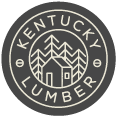How To: Finishing Reclaimed Barn Wood Flooring
We get a lot of questions about the best way to finish our reclaimed barn wood flooring. Folks specifically ask about a particular look: The DeVries’ floors. Thankfully, they have been kind enough to teach us how they did it, so we can share with you all! Check out both their floor and Wade’s to see how their lessons panned out here.
There’s a ton of different ways to finish a floor, from water- and oil-based polyurethanes to natural oil and hardwax options. We cover these in other posts, but right now we’ll take a look at the most popular method-of-choice for our clients to date. This will be quick, so hang on tight, and if you missed anything, give us a call!
According to Erik and Melissa, finishing their wood floors was a pretty easy process! The tool and supply list is fairly short:
Rental Floor Sander with Synthetic Fiber Abrasive Floor Polisher Pad
Natural Fiber Paint Brush (for applying oil-based stain)
Cloth Rags (for wiping stain off)
Synthetic Roller or T-Bar (for applying water-borne polyurethane finish)
Paint Pad (for cutting in your edges with the finish)
220-grit Sander Pad (if 24+ hours will pass between applying the first and last coat of finish)
That’s all you need! The steps are fairly simple:
It’s a good idea to sort your boards into three piles before installing into “Cleanest”, “Highest Character”, and “High-Waste” categories. This allows you to plan ahead with what you have and be able to mix in the different boards for an awesome look. If you have lots of larger missing knots, duct tape can be used on the underside of the boards, and then epoxy can be poured in to fill the hole. You can also mix wood glue and sawdust for a stainable wood filler.
Install the flooring over a quality subfloor, making sure to stagger your butt-joints so that they don’t line up. Nail the boards through the tongue at a 45-degree angle. You can use 13-gauge finish nails or standard flooring nails or staples made for 3/4” hardwood.
Using a wire or nylon brush, clean the floor, breaking loose any dirt, sawdust, and anything else that has accumulated on the surface after 100+ years. Vacuum thoroughly.
Buff the floor with the synthetic abrasive pad. This should remove large, loose splinters and prepares a good surface for your stain without removing those beautiful skip planing marks. Vacuum thoroughly once more.
“Tack” the surface of the floor with a wet cloth, and then apply your first coat of stain. Use a natural bristle brush to “flood” the surface of the floor, let sit for ~ 8 minutes, and then wipe off with a cloth. Excess stain can be buffed off with 00 steel wool.
Let dry 8+ hours.
Apply 1st finish coat with a roller or t-bar, making sure to cut in your edges with a paint pad.
Let dry 4 hours minimum.
Apply a second coat. If desired, add a third coat after another 4 hours, and then let cure for 24 hours before regular use.
Move in your furniture, kick back, and enjoy your hard-earned floor!
If y’all have any questions about finishing your flooring, contact us and we’d be glad to share ideas, tips and trick with you!
-Evan
UPDATE 05/2024 - We spoke with Melissa today about their floors! After 6 years (they installed their flooring in 2018), we wanted to know - How have the floors held up?
Here is her response:
”We still absolutely love the floors. They are our favorite!
For the most part, they are still in fantastic shape as far as the finish and such, but there are a few spots where the finish has worn down to raw wood. [However,] we haven’t done anything to [fix] them yet. [The wear is ]mainly on the parts that had cracks and weren’t smooth, and possibly from dog scratches, but even those places look fine and blend in with the natural barn wood look - we probably should try to touch up [these areas] to protect the wood. If we do, I will let you know how that goes. I will say, upstairs where we only have guests from time to time, they are still perfect as day one. My family is just extremely rough on floors.”








